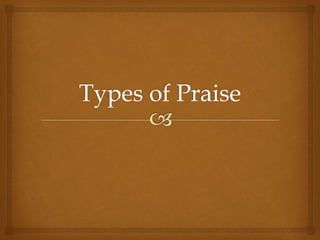Few things are more disappointing than when someone does something great and doesn’t get the recognition they deserve. In this article, we’re going to outline 10 essential steps you can take to show appreciation for others – from formally thanking someone for a job well done to simply complimenting them on their appearance. By following these simple steps, you’ll be setting the foundation for a positive relationship with the person you praise and helping them stay motivated and focused in their work.
Learn to Praise Someone Professionally

There are a few things you can do to praise someone professionally. Start by praising their skills and accomplishments. This can be done verbally or in writing. Next, commend them on their attitude and work ethic. It is important to show that you believe in them and that they are worth your time and effort. Finally, thank them for being team players. how to praise someone professionally
Introduction
When you praise someone, it can have a positive impact on their mood and behavior. As a professional, it’s especially important to be able to praise appropriately and in the right context. This article offers essential tips for praising someone effectively, both professionally and personally.
Step 1: Recognize the Types of Praise

There are three main types of praise that can be given: verbal, emotional, and performance-based. Here are examples of each:
Verbal Praise – Comments such as “Great job!” or “You’re fantastic!” can be given verbally. Emotional Praise – Comments that convey emotion, such as “Nice job!” or “You made me so proud!” can also be given verbally. Performance-Based Praise – Compliments that are related to an individual’s performance, such as “Excellent work!” or “You nailed it!” can also be given in this manner.
Step 2: Choose the Appropriate Time and Context for Praising Someone

Praising someone should be done at the right time and in the right context. When giving praise, always think about what kind of impression you’re making on them and whether it will spark a positive reaction. To give effective verbal praise, try to avoid giving compliments during times when someone is feeling upset or vulnerable. To give effective emotional praise, wait until after someone has performed an act that meets your expectations before giving feedback. To give effective performance-based
10 Essential Steps to PraiseSomeone Professionally

There are three essential steps to being a good praiser:
- first, know your audience and what they want/need;
- second, put yourself in their shoes;
- third, be specific and genuine.
Here’s how to do each: - Know Your Audience and What They Want/Need: This is the most important step. A good way to start this process is by thinking about who you’re praising and why. Is it someone in your workplace? Someone you’ve just met? A family member or friend? Once you have a good idea of who it is, take some time to research what they value and identify any qualities or traits that you think make them successful (or admirable). Pay attention to the things that touch on their personal life as well. For example, if someone in your office does great work with little supervision, chances are they appreciate the praise from their boss for meeting expectations even though it doesn’t always directly relate to their job.
- Put Yourself In Their Shoes: Now that you know what the person wants, it’s time to start giving it to them in a way that feels impactful and contributes to their success. Try using words or phrases that resonate with them – after all, these are the people who matter most to you! When delivering compliments, always avoid sounding mechanical or scripted – this breeds indifference rather than appreciation. Instead, use terms like “great job” or “you hit the nail on
How Praising Someone Affects Them

When it comes to praising someone, there is a delicate balance to strike. Too much praise and the individual can become overbearing or even bossy; too little praise and the individual may feel ignored or unvalued. To ensure that your compliments are successful, take these essential steps:
- Be Specific
When giving compliments, always be specific in what you are saying. For example, rather than saying “you’re a good worker”, say “I noticed how well you handled that situation” or “your analysis was on point”. The more specific your compliment is, the better it will be received.
- Use Positive Words
It goes without saying that when giving compliments it is best to use positive words. Rather than saying “you look tired”, say “I saw how alert and energized you looked today” or “you managed that conversation brilliantly”. Using positive words will help put the recipient at ease and make them feel good about themselves.
- Make It A Compliment Shared Between You And The Person You Are Praising
One of the best ways to give a compliment is to do so with someone who is close to the person you are praising – this will put them more at ease and they will likely appreciate the gesture more. When sharing a compliment with someone else, make sure to include facial expressions and body language as these will also
What to Look for When Praising Someone

When praising someone, it is important to be specific, concise, and positive. Here are some essential steps to follow:
- Establish mutual understanding. Before giving any feedback or praise, it is important that both parties are on the same page. Make sure you know the person well enough to give them accurate feedback and don’t criticize them without knowing their feelings. Similarly, the person receiving praise should be clear about what they want to hear and should not expect compliments in areas where they feel they do not excel (such as being a perfectionist).
- Be kind and sincere. When praising someone, it is important to maintain a benevolent and sincere attitude. Try not to use words that come across as judgmental or condescending; simply express your admiration for the person’s qualities in a constructive way.
- Use specific examples. When giving feedback or praise, make sure that your examples are concrete and based on personal experience or observation. Avoid using generalities or slogans; instead, provide specific examples of what you have noticed in the past or what you believe constitutes an outstanding performance in this particular situation.
- Are honest about your own observations and opinions. Just as important as being kind and sincere when giving praise, it is vital to be honest about your own observations and opinions before offering feedback or constructive criticism. It can be difficult to accept negative feedback from others without feeling defensive or attacked, but honesty is key in cultivating healthy relationships –
How To Change Criticism into Compliments
Criticism can be a difficult emotion to manage, but it doesn’t have to be. Follow these tips to change criticism into compliments:
- Define the goal. The first step is to understand your desired outcome. If you want to make someone feel good about themselves, then focus on complimenting their skills and strengths. If you’re looking to critique a work of art or a presentation, keep that in mind as well.
- Stay positive. Complimenting someone correctly requires sincerity and a positive attitude. If your comments come across as negative, they’ll only backfire. Remember, this isn’t about one-upping the other person; it’s about complimenting their abilities and making them feel appreciated.
- Tailor each comment carefully. No two people are exactly the same, so it’s important to tailor each comment to the individual being complimented. For example, one person might get a lot of credit for busting their butt at work; another may get kudos for staying calm under pressure. Take the time to assess what makes this person unique before offering a critique.
- Make sure your compliments are true. Don’t try to be funny when giving platitudes like “You’re doing great”; if something isn’t factual, it won’t feel genuine when delivered as a compliment.” If you can’t honestly say something positive about someone, don’t say anything at all! It’s not worth risking an embarrassing confrontation
Conclusion
When it comes to professional relationships, it can be easy to get lost in the jargon and lose sight of what is really important. By following these 10 essential steps, you can easily maintain a good working relationship with anyone – no matter their role within your team. As long as you remember to be reasonable, compassionate, and patient when communicating with each other, your interactions will flow more smoothly and produce better results. Thanks for reading!
